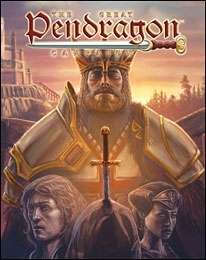In my A Game Per Year project, my goal has been to read one roleplaying game corebook for every year they’ve been published. However, I soon started to feel that it was hard to decipher how the games were really meant to be played. For this reason, I decided to start a parallel project, An Adventure Per Year, to read one roleplaying adventure for each year they’ve been published.

When I started roleplaying thirty years ago, the standard format was assumed to be a long campaign consisting of many game sessions. In the years since, this standard has changed and now it feels like the vast majority of especially indie games are designed for one-shots or short campaigns of just a handful of sessions.
Still, the long campaign exists as one type of classic roleplaying format. With this in mind, it’s strange how rare published long campaigns are. The GM is assumed to create the campaign themselves using the published game as support and the selection of published pre-prepared campaigns that could last for 30+ sessions is very limited.
I’m not sure why this is. One explanation could be that they have limited commercial potential since running them is such a huge commitment. However, I’d also posit that they’re extremely hard to write and design, so hard that most of us are not up to the task. How do you prepare such a massive amount of material, how could you even imagine playtesting it in any reasonable time, how would you take into account player improvisations and contributions?
In light of all that, Greg Stafford’s The Great Pendragon Campaign is a towering achievement. It’s the companion campaign to the Arthurian Pendragon roleplaying game. In the beginning, the characters are knights during the reign of Arthur’s father King Uther and as the years go by their descendants and descendants of descendants will live and adventure through the entire Arthurian era up until the death of King Arthur.
Depending of playstyle, I can imagine that it could take over a hundred sessions to go through the campaign.
Reading adventures, it’s interesting to see how the design maps out the game experience. For example, traditional dungeon adventures are often concerned chiefly with the geography of their subterranean locations. The design exists as maps supplemented with room descriptions.
In contrast, adventures published for World of Darkness games in the Nineties were presented as scene descriptions. The characters progressed from one scene to the next, in a style similar to a lot of freeform design as well.
In The Great Pendragon Campaign, the main mappable surface is time. The campaign progresses year by year as King Arthur fights wars and convenes his court. The player characters can have their own adventures, start families and run their own fiefdoms. For the game to make sense, time has to pass fairly fast, so the progression of years can make itself manifest.
The yearly updates presented in the book create a superstructure for the campaign but there’s a lot of space for the player characters’ own stories. In fact, I could imagine them taking up most of the playtime, with the Arthurian events of the campaign present as flavor, to give the game and its setting it’s unique atmosphere. In this sense, this feels almost like a setting book instead of an adventure, just built on time instead of geography.
The campaign has an interesting approach towards real history and historical time. The technological progression of the Middle ages has been compressed to happen during the reign of King Arthur so that centuries of real historical change in armaments, castles, customs and culture occur in just a few short years. It’s an interesting stylistic choice and definitely heightens the feeling of time passing and the world changing during the campaign.
One of my personal favorite elements in Pendragon is courtly love and it’s fun when the fashion for it washes over the world of the Arthurian knights. It also underlines what kind of people the knights are: They’re principled, emotionally articulate, dynamic and prone to grand gestures. A knight is expected to be able to recite a sonnet to his lady at the drop of a hat. They feel like more complete human beings than male heroic protagonists in many other types of stories, contemporary movie heroes included.